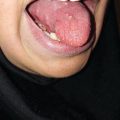, Ahmad Ameri1 and Mona Malekzadeh2
(1)
Department of Clinical Oncology, Imam Hossein Educational Hospital, Shahid Beheshti University of Medical Sciences (SBMU), Shahid Madani Street, Tehran, Iran
(2)
Department of Radiotherapy and Oncology, Shohadaye Tajrish Educational Hospital Shahid Beheshti University of Medical Sciences (SBMU), Tehran, Iran
Radiation-induced gastritis occurs in about 30–50% of patients undergoing radiation therapy whenever the stomach is included in radiation fields as the main target or an organ at risk (e.g., during radiation treatment of lymphoma, neoplasm of lower esophagus, stomach, biliary tract, pancreas, testis, or including of thoracic stomach in radiation field after gastric pull-up procedure) [1–4].
13.1 Mechanism
The gastric walls consist of mucosa, submucosa, muscularis, and serosal layers. The gastric mucosa is the mucous membrane layer of the stomach, which contains the glands and gastric pits. The epithelium of the mucosa has gastric pits (mucous membrane invaginations), and lamina propria contains gastric glands. There are three types of gastric glands including cardiac glands, which produce lysozyme and mucus, fundic and body glands, which produce hydrochloric acid, pepsin, and intrinsic factor, and lipase and pyloric glands, which produce lysozyme and mucin [3].
Each fundic gland is divided into three segments: the isthmus, neck, and the gland proper. The main epithelial cell types of the gland are the precursor mucous neck cells, the parietal or oxyntic cell (secrete hydrochloric acid), and the chief or zymogen cell (produce pepsinogen). The surface of the mucous membrane is covered by a single layer of mucous cells. These cells secrete mucous and develop the gastric mucosal barrier [5].
Several types of endocrine cells are found throughout the gastric mucosa and produce histamine, gastrin, and somatostatin.
Irradiation produces marked mucosal and submucosal edema, ulcerative or erosive lesions, and changes in the quality and quantity of gastric secretion [2, 6].
The early changes in gastric mucosa include mucosal and submucosal edema and inflammation, endothelial cell swelling, and capillary dilation, which could be demonstrated after 20–25 Gy of radiation dose [3].
With higher doses, more severe injuries could occur including gastric erosion or ulcer. The gastric ulcer developing rate increases with doses above 45 Gy (25–30% of patients) [6]. The degree of gastric acidity in radiation ulcers is variable. In some cases, the acidity is somewhat increased; in the majority, it is normal or even subnormal [1].
Radiation initially reduces surface mucous cells due to their relatively short life-span. So breakdown of the mucosal barrier, net flux of electrolytes into the gastric lumen, and back diffusion of the luminal hydrogen ion occur. Mucosal histamine is released and stimulates secretion directly from the glandular cells, and a transient increase in acid secretion during the radiation therapy exhibits [5, 7].
After the initial gastric hypersecretion, secondary mucosal damage occurs and induces coagulation necrosis of glandular cells, denudation of glandular epithelium, cystic dilatation of the glands and a reduction of the gastric glands, and the volume of gastric secretion and its content change [7]. A significant reduction in the secretion of hydrochloric acid and pepsin develops. The degree and duration of the radiation effect on gastric secretion depends on radiation dose and biologic differences [8]. It has been reported that gastric acidity may suppress or significantly decrease with doses of less than 20 Gy [9]. Some have suggested that chief cells are more radiosensitive than are parietal cells, and gastric acidity suppression occurs first due to damage to the pepsinogen-secreting chief cells; parietal cells are more resistant and are depressed later [10]. Another reason for gastric acidity suppression is reduction in gastric histamine content [11]. A decrease in gastric acidity occurs within 4–6 weeks after completion of radiation therapy [12].
13.2 Risk Factors
The severity and frequency of the acute gastric lesions depends upon the total dose received by the stomach. The radiosensitivity of stomach seems to be higher than the small and large intestine [13]. The gastric ulcer never occurs following less than 45 Gy. When the radiation dose exceeds 45 Gy, the incidence of gastric ulcer is 25–30%. With higher radiation dose, the more serious the gastric damage may occur, leading to penetration hemorrhage and perforation [6]. The risk of perforated ulcers increases with doses greater than 60 Gy [14].
Chemotherapy may also increase the gastric injuries induced by radiation.
13.3 Timing
Gastritis will develop in the second and third week of irradiation (20–30 Gy) [15]. Patients may experience nausea, epigastric distress, and uncommon vomiting, and these symptoms last for only a few hours after each fraction of radiation. Later with higher radiation doses, more severe symptoms including epigastric pain may occur. Symptoms usually resolve 1–2 weeks after completion of the radiation therapy. Occasionally the mild epigastric distress or dyspepsia persists for months or even years [3].
Stay updated, free articles. Join our Telegram channel

Full access? Get Clinical Tree





